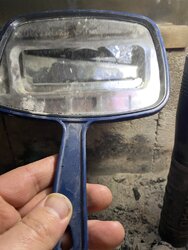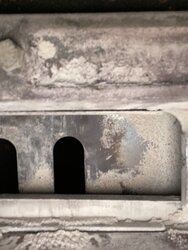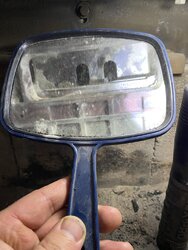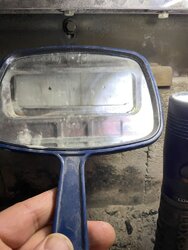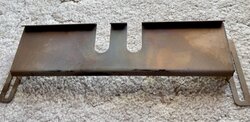Hello everyone,
I'm new to the forum but thought I would chime in on the installation of our new Regency Hampton HI500, which is identical to model CI2700, but with the decorative cast iron face plate (gorgeous insert!). My wife and I chose this stove as a replacement for our aging 35 year old Regency Classic, with the desire to reduce airborne emissions and increase burn times / efficiency, as our wood stove is the primary heat source for our 1280 square foot home. First off, we are getting 8 to 10 hour burns with well seasoned Fir and Maple, which is about 3 times as efficient and long lasting as the previous non-catalytic Classic; very impressed and pleased with this performance. I think with very dry hardwood, burn times approaching 12 hours are possible - we have yet to test this theory with well seasoned Arbutus, a local hardwood.
Yes, there is certainly a bit of a learning curve whilst transitioning from a conventional to hybrid catalytic stove, but it's not rocket science. One must weigh all the factors, such as existing draft, type of firewood, moisture content and settings on the wood stove itself, all being prerequisites for proper combustion and performance. I noticed for example allot of conversation on this forum re residue build up on the glass. My experience so far is that on a hot burn (damper from 100 to 50 % and catalytic combuster engaged), and similar to our previous non-catalytic stove, there was very little resin deposit on the viewing glass, the "cold air wash system" doing it's job quite admirably -a light dusting of brown ash and some darkening in the corners being all that could be negatively noted, easily removed with the wipe of a dry paper towel. Well seasoned wood with a 12% or less moisture content, and proper air flow is the answer here. If one doesn't already own a moisture meter, it's a must have and a dime a dozen on Amazon -this stove requires a well seasoned fuel source with low moisture content to perform as claimed by the manufacturer.
Now then, under ideal conditions, with decent draft, dry firewood, bypass closed , damper below 50%, catalyst up to temperature and glowing red, long burns and even heat output were achieved from our stove for many hours. What my wife and I wanted, was to be able to stoke the stove at bedtime and not have to add additional firewood or attend the wood stove again until we rose from bed the next morning - our Regency Hampton 500 has given us just that luxury! But let's give further thought to this ......... essentially, once dampened down to a minimum, we are essentially snuffing out the fire and producing copious amounts of smoke ...... the very fuel the catalytic combuster needs to continue operating for many many hours on end, maintaining temperatures above 500 degrees F and minimizing emissions at the same time. In turn, the heat generated by the combuster keeps the firewood below smoldering, feeding the catalyst until nothing remains but ash. 1100 degrees F is typically what the supplied premature monitor reads initially when the combuster is doing it's job, obviously diminishing in degree over the course of the evening and wee hours of the morning as the fuel source is used up. In my mind, it stands to reason therefore, under these conditions, with so much smoke and volatile vapor circulating in the firebox, aforementioned smoke and vapor will undoubtedly condense on the relatively cold ceramic viewing glass, creating oily deposits, and clouding over. It's to be expected and normal operation IMHO. This is all of course dependent on inherent draft, damper settings and moisture content of one's fuel source. I don't think it's reasonable to expect a perfectly clean viewing glass after hours of use under these conditions. Long and even burn times as a result of a fully dampened fire do not go hand-in-hand with a spotless viewing glass -just saying, it's common sense.
One issue we have yet have to resolve however with our new HI500/CI2700 Catalytic Wood Stove, is smoke ingress into the living room whenever the door is opened for first fire or stoking up. Even with the damper wide open, and catalytic bypass engaged, smoke wants to travel the path of least resistance, which, with the secondary upper shield in place on a system like ours with lower chimney draft, is out the front opening of the wood stove insert and into the room. I'm thinking of removing this part to see if the problem can be easily resolved by increasing draft, as the smell of wood smoke in our living room, blows.
In response to Molson Golden's query, we also have vaulted ceilings, and a ceiling fan running in reverse makes a world of difference in terms of heating a room, or an entire house for that matter! A blower is also a must! We went with an AC Infinity Airblaze over the OEM AC Blower we had previously, as the AC Infinity unit is far more efficient being PWM DC, with temperature/humidity sensing , 10 speeds and allot less noise!
Just my 2 cents for what it's worth -will report back with results of any change in smoke ingress after removal of the upper shield. Hope my experience and thoughts will be of benefit to other forum members with similar questions.
All the best,
Avian Manor


